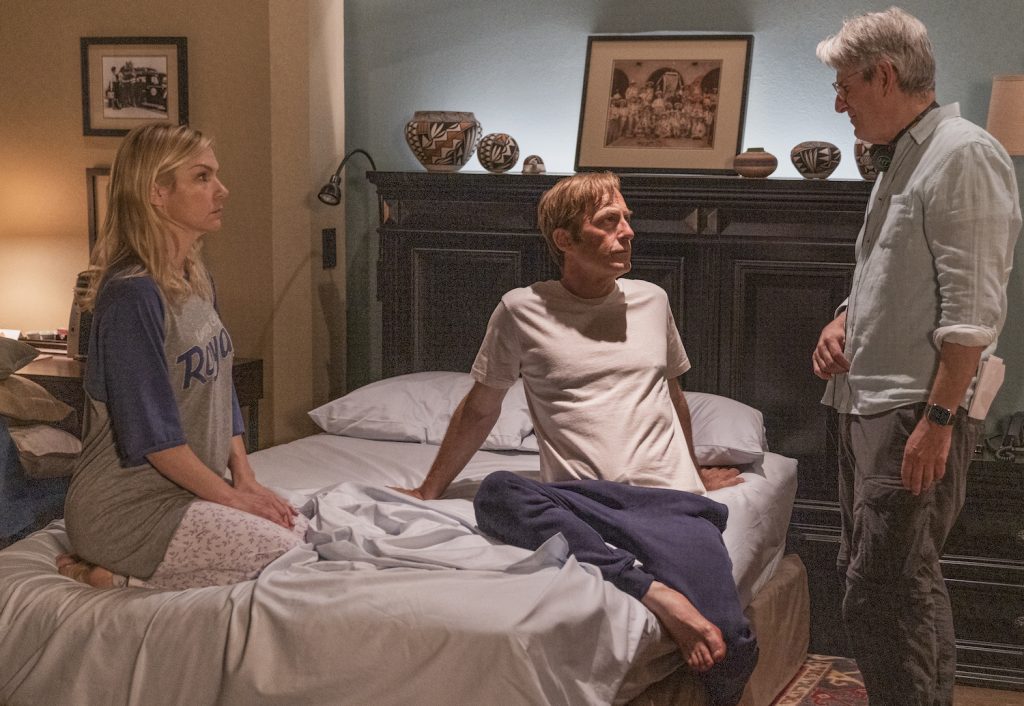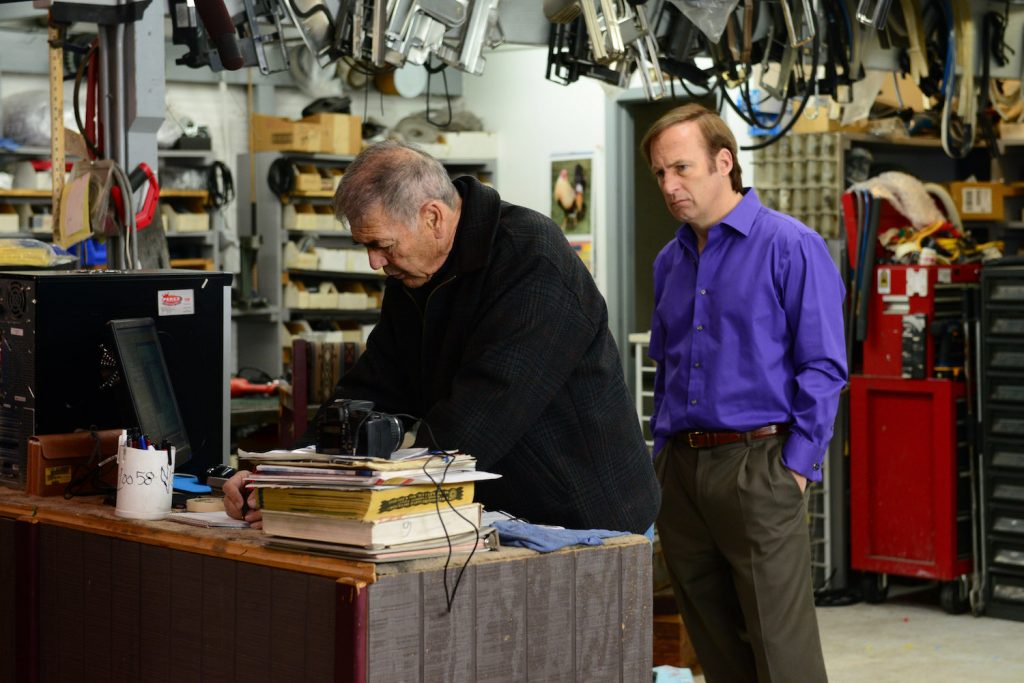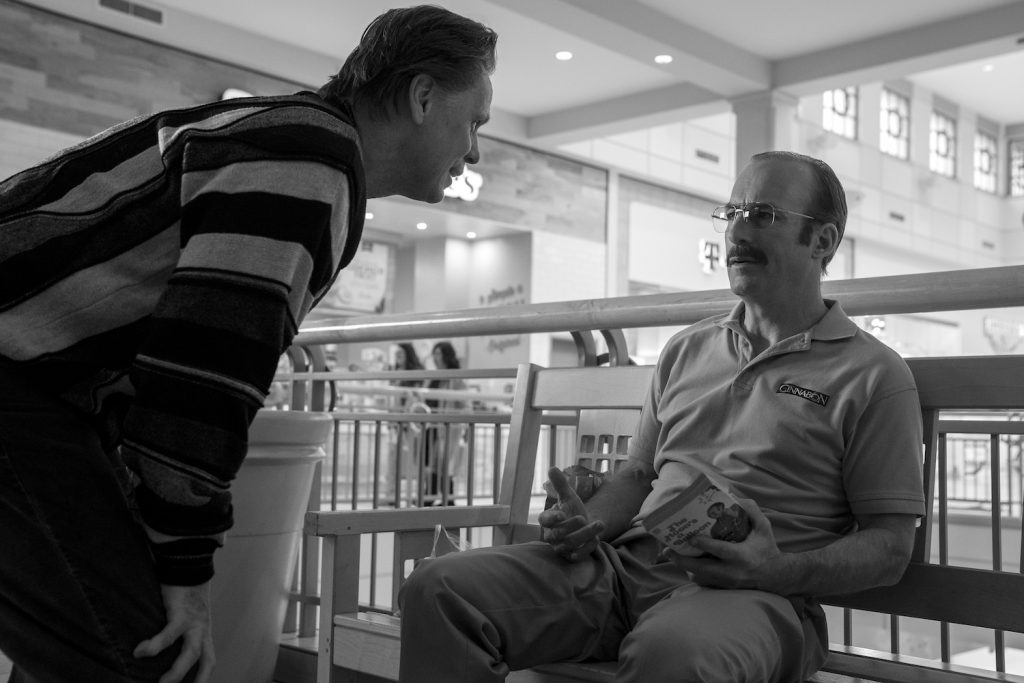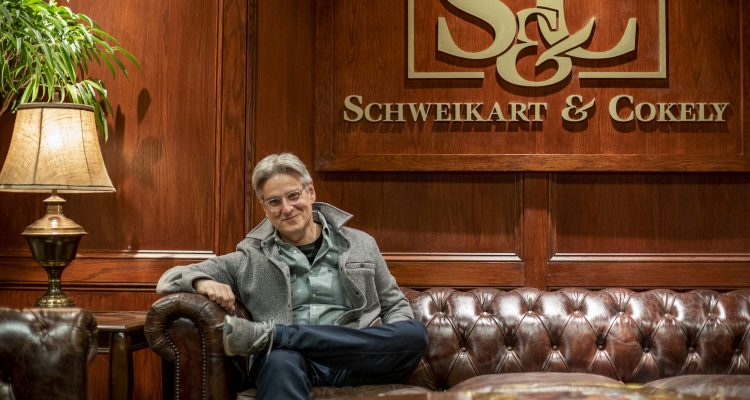Emmy winner Peter Gould is known for wearing many hats on AMC’s Better Call Saul, the Emmy nominated prequel series to Breaking Bad. In the season five finale credits, you’ll find Gould listed as writer, director, and executive producer — not to mention his roles as showrunner and co-creator of the series.
With the conclusion of season five, Gould has unequivocally delivered the series’ finest chapter and arguably the best season of any show premiering in 2020. The finale offered several twists and turns, with Lalo Salamanca surviving a team of assassins and Kim Wexler proposing a cruel plan that would decimate former boss and colleague Howard Hamlin.
“I think the moment where she (Kim) shoots the double guns at Jimmy is in a lot of ways the climactic moment of the season,” Gould says.
The busy showrunner took time away from the season six writers room to participate in Awards Focus’ Better Call Saul week, discussing some of the season’s biggest moments, the return of fan favorites, and what we can look forward to in the sixth and final season.
Awards Focus: Right now you’re breaking the final season for Better Call Saul. How have you adapted to the zoom writer’s room, in terms of productivity and the challenges of talking over one another?
Peter Gould: We’re all intensely aware of how lucky we are to be able to work while the world is in turmoil and crisis. First comes gratitude then comes the grousing (laughs). We’re doing excellent work but it’s painful as everything takes quite a bit longer. It’s like trying to play in a band over zoom, it’s hard to achieve the rhythm found in the normal writers room.
AF: I imagine you’re having to address the need for social distancing and minimal extras when shooting starts in the fall?
Gould: It’s a great unknown, we’re not exactly sure how it’ll work out. There’s the question of, “Should the show look and feel different because of the circumstances that’s it’s shot under?”
Our show and Breaking Bad have a tremendous internal continuity. It doesn’t take place in the present day so you can’t work the pandemic into the plot. Our number one question is, “Can we do this safely.” With that in mind, I’m determined that the show won’t take a quality hit because of the current circumstances.
AF: In this season’s finale, “Something Unforgivable,” which you co-wrote with Ariel Levine and directed, there’s a huge spotlight placed on the character of Lalo Salamanca (Tony Dalton).
You’re introducing more humanity to Lalo as we meet his friends at his compound while also allowing Tony to have his “John Wick moment” as he describes it. Can you talk about choreographing that finale, digging an actual underground tunnel, and the work that went into that set piece?
Gould: Let me start with saying that I consider myself a student director. Our crew faced some incredible challenges in that particular episode. Mark Freeborn, our production designer, build more sets for that episode than we’ve ever done before on either series.
From the kitchen set, to the walls surrounding Lalo’s compound, to the bathroom and the underground tunnel… they were all pieces that had to be built. Prior to this episode, my entire directing career there was one gun shot scene. It happened when the character of Andrea (Emily Rios) was shot in Breaking Bad.
This episode called for a lot of gunfire and bullet hits and I was very fortunate to have the support of an incredible creative team from the props department to the stunts let by Al Gatto. Shooting a sequence like that, it takes a lot of time to just shoot a few moments. Every time a gun fires blanks the set has to be cleared and it requires a tremendous amount of planning and a very meticulous approach to make it look chaotic.
I was very happy with the way that sequence worked out. And of course at the center of it all was Tony Dalton. Tony is a wonderful physical actor and just a wonderful actor in every sense. He sold every moment and made every moment so specific and was so much fun to work with. So that was sort of my first attempt at making a ‘John Wick sequence’ and it was a lot of fun.
AF: The way that Tony Dalton brings a charm and a nonchalance to the character, but can turn on a dime to become deadly serious is quite captivating. In many ways, it plays against the stereotype of the big bad drug dealer. How important was it for you to find somebody that could bring something fresh to the idea of the big bad cartel boss. Was that something you were looking for all along, or did Tony give that to you in the room before you realized you were looking for it?
Gould: It’s a little bit of both because we spent a lot of time thinking, “Who is Lalo?” There’s a very mechanical side to it, you know we’ve seen what Tuco is like and what Don Eladio is like, but what is a different breed of cat. A different kind of guy that could be a worthy opponent to Gus Fring?
Maybe he’s charming, maybe he’s actually enjoying himself, maybe he’s somebody who can control his emotions a little more than Hector Salamanca. The idea of him having a certain charm as opposed to being cold blooded was intriguing. When we saw Tony, he brought all that and so much more to the character.
Tony really is a twenty-first century Errol Flynn, I think there is something so watchable about him. He’s an actor who really should be playing heroes because he’s somebody you want to watch and you want to follow.

(Photo Credit: Greg Lewis/AMC/Sony Pictures Television)
AF: Last season, we ended things with Jimmy finally embracing Saul goodman and leaving Kim in shock from his performance in the courtroom. In this season, you chose to end it with the action scene with Lalo versus the hotel conversation with Jimmy and Kim. Was there ever a consideration to end on Jimmy and Kim, and can you talk about how the editing process is occasionally a rewrite of the script? Are there any editorial changes that might surprise fans over the course of the series?
Gould: We tried it a number of ways, but the biggest news of the season and maybe the most transformational part of last season was to indicate where Kim’s journey is going and where Kim’s head is at. I think the moment where she shoots the double guns at Jimmy is in a lot of ways the climactic moment of the season. I think the juxtaposition of those two scenes will make even more sense after we’ve seen the final season.

(Photo Credit: Greg Lewis/AMC/Sony Pictures Television)
AF: When you’re dealing that timeline inching toward Breaking Bad, I’m curious about the challenges of continuity. For example, how much research was needed before you could write May 2004 on Kim and Jimmy’s wedding certificate?
Gould: There’s a tremendous amount of thought that goes into the timeline. We were able to keep things kind of vague in Breaking Bad, which certainly helped. However, with Better Call Saul, we’re dealing with the law, lawyers, and lots of documents. We ended up with a lot more dates on things than I would’ve liked to see (laughs).
We have an incredible writers room and writers support staff including and especially Ariel Levine and script coordinator Kathy Williams-Foshee. They’ve developed an elaborate system of dates to keep it as consistent as possible.
AF: In season five, we’re treated with the return of Dean Norris as agent Hank Schrader. How do you balance moments of fan service while giving the franchise veterans something meaty to play should they return? I’m sure fans would love to see Marie (Betsy Brandt) with Hank.
Gould: Betsy Brandt is one of my favorite people in the whole world and we’ve been desperate to try to find a way to get her on the show since the beginning. The discipline that we’ve tried to exercise is to serve the story of Jimmy McGill, Mike Ehrmantraut and Kim Wexler.
If other characters serve that story and make sense in that story, then we love to have them back on the show. We have a board in the writers office which has nothing but characters we would like to see again. We’ve had such talented people that we’d love to have them back.
As Vince sometimes says, “We are the first fans of the show.” So I was over the moon to have Dean Norris and Steven Michael Quezada back battling it out with Jimmy McGill this past season. I had the same feeling having Robert Forster back this year.
There are some surprises coming up in season six that will hopefully work in the story and not detract from the main point of the scenes and those moments.

AF: Speaking of the late Robert Forster who played Ed Galbraith, he is one of only two characters to appear in all three projects in the Breaking Bad universe. Can you talk about what an indelible mark he left on the franchise, after initially just one episode in the final season of Breaking Bad?
Gould: I was so lucky to get to write both of his episode appearances and direct that episode you mentioned in Breaking Bad. He was a wonderful collaborator and watching him and Bryan Cranston act together, it was truly a master class and very special to witness.

(Photo Credit: Ursula Coyote/AMC)
AF: Jonathan Banks mentioned in our recent interview that he’d like to explore his relationship with Matty’s mother. Being that this season is the shows final season, is there any possibility of new threads such as that still being opened?
Gould: Mike is such a deep complex character with so much milage on him, who knows? Theres all kinds of possibilities and we have a wonderful freedom to go back and forth in time so no-one who dies on the show is necessarily gone forever.
AF: Emmy nominated writer Tom Schnauz has said that he couldn’t imagine not having a full Gene episode at some point, maybe more than one. With the expanded episode count for season six, how do you balance wrapping up the storying line in the prequel series while making sure the Gene storyline is adequately fleshed out?
Gould: It’s interesting because this show is a prequel to Breaking Bad, but the Gene sequences also make it a sequel. I don’t want to promise anything specific but let’s say that I am fascinated by Gene, who has all these characters contained inside him. He’s Gene, he’s Jimmy, he’s wanting to be Saul and he’s trying to keep it all tamped down and that’s what he has to do to survive. If Gene is the ultimate survivor, then you have to wonder what he’s willing to do to survive. How far is he willing to go and is there anything in life that’s more important now than survival? I think its safe to say we’re gonna see more him.

(Photo Credit: Warrick Page/AMC/Sony Pictures Television)


